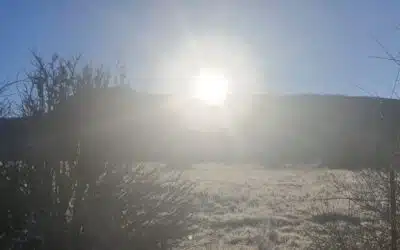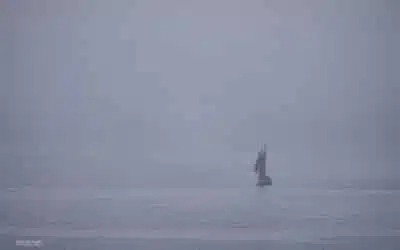The Green Dwarf Friend

Written By Mila Khyentse
Blog | Culture and tradition | General Introduction to Dzogchen | The Dzogchen Journey
In “The Green Dwarf Friend”, Mila Khyentse talks about a planet far, far away, and the relationship with the Master via the Force.
The Green Dwarf Friend
Dagobah.
The farthest corner of a galaxy far, far away…
A planet made of swamps, crawling with monsters, with a humidity level of over 250%, home to (almost) no intelligent life, and where malaria is the least of your worries if, for some obscure reason, you ever decide to go there on holiday… like Luke Skywalker.
And yet.
In fact, if Luke decides to go there after being defeated by the Empire on Hoth (a planet of ice, as the name suggests), it’s in the hope of being trained. Trained, you ask? In this shithole?? Where there is (almost) no intelligent life???
That’s right.
And trained for what? Survive in a hostile environment?
Not at all.
The Force. That primordial energy that is the spark of life for all beings in the universe far, far away… Luke must be trained to master his mind and discover its full potential. Traditionally, those who train and master the Force are known as Jedi Knights.
And apparently Dagobah is home to the very last of the great Jedi Masters.
No kidding! In this shithole???
Anyway. After a rough landing in the trees, as there isn’t a single astroport on the whole planet, Luke ends up watching his X-wing (his spaceship) sink into the swamp. You’d think he’d have to go through a lot of trials before he could meet Yoda…
So here he is, alone with his R2D2 robot, which has trouble moving over swampy terrain, lost on a not-so-nice planet with no way back.
Suddenly, just as Luke is setting up his equipment for a bivouac, a long-eared green dwarf appears on a branch, eager to be his friend. Dressed in a simple, dirty toga, leaning on a stick, gifted with language and childlike behavior, he looks very old. He rummages through all of Luke’s belongings, steals his food, fights with R2D2 for a light-producing object (which we would call a flashlight)… In short, an attitude that’s neither serious nor civilized. The attitude of a swamp savage. In fact, Luke makes no mistake, sporting a paternalistic, slightly disdainful air until he says he’s looking for Jedi Master Yoda. “Take you to him, I can,” says the green dwarf friend, before offering to follow him for a “proper” meal at his home.
What else was there to do? In the end, Luke followed.
Arriving at the green dwarf friend’s hut, our young Jedi apprentice grows increasingly impatient, refusing to eat or wait any longer to meet Yoda.
Driven by his emotions, he sees nothing. Driven by his preconceptions about life and appearances, he recognizes nothing. Trapped by his impatience, he hears nothing.
Only when he hears his green dwarf friend say that he can’t do anything for him, then the voice of his former master Obi-Wan Kenobi echoing in the void, telling him that Luke was like him when he was trained, does our Jedi apprentice finally realize that the little being in front of him is: “Yoda!?!”
Luke can’t believe his eyes, he has finally found his Master, the one who can help him complete his training on the Jedi path!
And the training begins!
With Yoda on his back, both literally and figuratively, Luke must exercize his mind and push his limits. His green dwarf Friend of Good asks him to stack stones – you know, the latest trendy thing tourists do when they wander the swamps of Dagobah – but not with his hands. No, with his mind and the help of the Force! Luke grumbles. He curses! He gets angry. He can’t believe it. He despairs… but he tries anyway. “Don’t try. Do it or don’t do it! But there is no trying,” Yoda tells him. F…! Indeed, why limit yourself to your hands when your mind has no limits? And Yoda asks him to get his ship out of the swamp (it seems to be improperly parked)… without his hands. Luke tries. He concentrates, closes his eyes, frowns, and slowly the X-wing rises out of the swamp. Suddenly, Luke’s old demons catch up with him. “No, it’s too heavy! I’ll never make it! And blah, blah, blah!” The X-wing sinks again. With a sigh (a Friend of Good sighs a lot at the beginning of your journey), Yoda concentrates a little and the ship emerges completely from the swamp. Incredible! It’s a miracle! No, it isn’t. Yoda simply doesn’t need his hands anymore. Practicality aside, it means he’s gone beyond the limits he set for himself with his training and trials. The story doesn’t say whether he complained as much as Luke did during his training, but it seems likely…
Thanks to Yoda’s training and his time in the Cave of Evil, where he had to face his fears, and pugnacity, Luke was gradually transformed. He eventually has visions of his friends in danger and, against the advice of Yoda and Obi-Wan Kenobi, leaves Dagobah and his Master, whom he will never see again in his lifetime. It is the trials he will overcome that will complete his training, even if he loses a hand in the process.
.
If there’s one fundamental piece of advice for practicing the path of the Great Perfection, it’s this: take the time to meet and get to know your Green Dwarf Friend. He is the key that can open you up to the Force and ultimately put an end to all suffering.
The script for the second opus in the famous Star Wars series, co-written by George Lucas and Lawrence Kasdan in 1977, is a perfect example of the Friend of Good or Master in the Dzogchen tradition. To define the latter, there’s no better adjective than “ordinary”.
Ordinary, one might even say unremarkable. There are no fireworks in the Great Perfection, just as there are none on the planet Dagobah. The true qualities of a Friend of Good are not visible in his or her clothing or lifestyle, and are usually only revealed in a real encounter. It’s only then, when we discover his qualities, that we can lift a corner of the veil of the Force.
Ordinary, for the Friend of Good in Dzogchen possesses nothing more than we already have. He’s not “powerful” or “extraordinary” by nature; we all are. All beings to the farthest reaches of space are. Their primordial nature is just waiting to blossom and bloom. There’s just one big difference: the Friend of Good, through his training and the transmission he himself received from his Friend of Good, has succeeded in making what is still latent in most beings blossom and bloom; and he can give us the method to do it. But he can’t do it for us. He can accompany us, but the path is a personal one.
Ordinary, because it’s necessary to build a trustworthy, healthy, long-term relationship with the Friend of Good. However, as we have seen with Luke and Yoda, this is not something that can be done quickly. It’s necessary to take the time to get to know the Friend of Good, and for the Friend of Good to get to know you. There is no such thing as a perfect Friend of Good, a Master. That doesn’t exist. There is one who is qualified and right for us. Perhaps this one won’t suit our next-door neighbor. He is qualified because he has received the teachings of the Great Perfection, practiced them, assimilated them and finally realized them for himself and can therefore pass them on. He is good for us because he gives the teachings according to who we are, our personality, our way of thinking and acting, and so on. Not according to what we want. Not according to what we want, but according to what we really need to realize the Great Perfection of our mind. So he acts according to what we are and understands us well. What we can’t do, the Friend of Good won’t impose on us if we tell him clearly. Otherwise he’s not for us. It works both ways. On our side, we know for sure that the teachings he gives us are adapted to our needs. We know this because we have spent a lot of time ‘testing’ what he gives us, how he gives it to us and the results that follow. Now we know that these teachings, the pace at which they are assimilated, the way they are delivered, etc., suit us very well. So we’ve established a long-term relationship, and out of that association will come the awakening to our own nature and its potential mastery before the moment of death.
The final point that Luke and Yoda show us is the efforts, trials and difficulties that we will automatically encounter on our path to discovering the Great Perfection. We will encounter them for the simple reason that there is no such thing as a life without difficulties. Since the path to Dzogchen is completely interwoven with our own existence, and is even based on the experiences of our own existence, it is completely illusory to think that the path to discovering one’s own primordial nature is a long, calm river. Trials are part and parcel of the journey, and the very basis of it. As we’ve seen, Luke didn’t start out as the king of the world, sitting comfortably on his throne… Indeed, some, like the Buddha, even descended from it to devote their lives, or part of their lives, to the path to enlightenment. Luke began his apprenticeship on Dagobah with an encounter with a monster and the apparent loss of his return ticket, his X-wing.
So we’re warned from the start that whatever path of transformation or evolution we take, be it spiritual or mundane, it requires effort.
This too is part of the relationship with the Friend of Good. He expects us to make an effort to achieve what we want. So let’s be careful not to mistake the result we want! The Master knows very well: no effort, no result.
Luke is impatient at first. He is full of false beliefs: he can lift a stone with his hands, but he can’t lift his spaceship! “That green dwarf who wants to be my friend can only be a savage”, and so on.
Then, little by little, the training began to bear fruit: he became calmer and calmer, listening more, anticipating more, thinking more about everything he could do. This evolution is thanks to the meeting of the two; Luke and Yoda naturally end up finding common ground. They’ve tamed each other, taken the time to get to know each other, and know that one is there for the other. It’s this beneficial association that ultimately allows Luke to face his fears and trials and emerge victorious. Minus one hand, though…
If there’s one fundamental piece of advice for practicing the path of the Great Perfection, it’s this: take the time to meet and get to know your Green Dwarf Friend. He is the key that can open you up to the Force and ultimately put an end to all suffering.
More Posts
The ground (gzhi)
This article is the first in a new category designed to provide a better understanding of the essential words and concepts of Dzogchen.
The Call of the Lineage
In “The Call of the Lineage” Mila Khyentse talks about the Dzogchen lineage of his master Alags Chörten, called “the Diebu Lineage”.
The Supplication that Fulfills All Wishes
In “The Supplication that Fulfills All Wishes”, Mila Khyentse gives us a prayer from his Master for difficult times and conditions.




